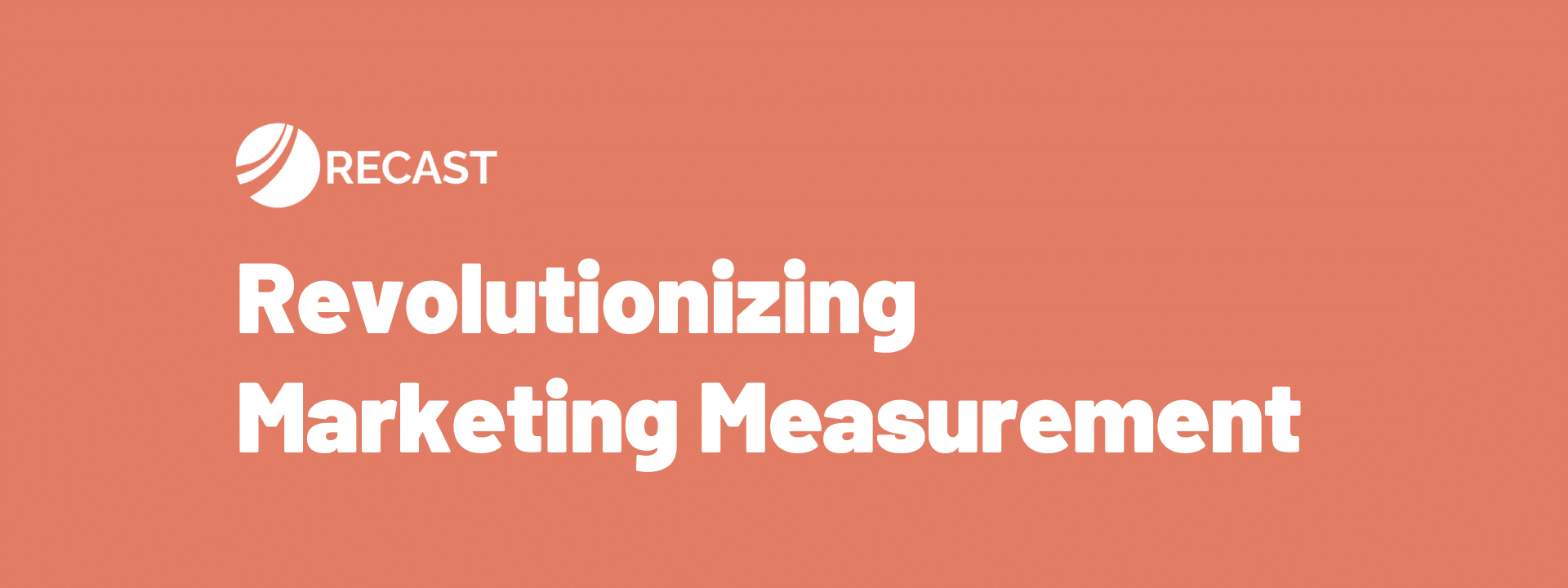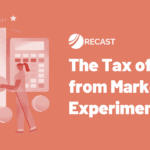It is said that the best product ideas come from having to scratch your itch – from facing a big, challenging problem and urgently needing to find a solution for it.
Recast has a similar genesis story. I ran the data science and analytics team at Harry’s, known for its men’s grooming products. It was there where the seed of the idea of what would end up as Recast was planted.
When I was at Harry’s, our team spent a lot of time thinking and working to improve our marketing measurement. We developed an internal digital tracking system, blending first and last-touch information with survey data. This system tracked consumer interactions with our ads and their subsequent purchases on our website, giving us a glimpse into the effectiveness of our digital marketing efforts.
But this was just the tip of the iceberg.
The real challenge emerged when we tried to extend our methodologies to offline channels like TV, radio, and podcasts. These channels were not clickable, had no UTM codes, and the multi-touch attribution that somewhat worked for paid social and paid search stopped being reliable.
How do you measure someone seeing a billboard and then searching for your brand? Or a TV spot? Or a radio commercial? Or podcasts? How do you know if they’re incremental?
These questions became even more complex when we started distributing our products in retail giants like Walmart and Target. We had no digital data there at all, which meant that we were flying blind.
At the same time, iOS 14 and new privacy regulations kept reducing our visibility. Digital tracking was breaking, and following people across the Internet was no longer an option.
This situation at Harry’s was not unique. It was reflective of a larger, industry-wide problem.
Navigating the limitations of traditional digital tracking
With the realization that digital tracking was not enough, we looked for alternative measurement methods.
Marketing Mix Modeling became an interesting option. It didn’t rely on cookies, it focused on incrementality, and it worked for the omnichannel strategy that the vast majority of modern brands have.
I was excited, but it didn’t really work.
Traditional marketing mix models (MMMs) were built for a slower, less complex era. Marketing channels were fewer, consumer behavior was less complex, and changes in marketing strategies were infrequent.
Advertising spots were bought via “upfronts” – where brands would buy all the media for the next six months to a year. Running a fairly simple linear regression a couple of times a year would give you decent results – the platforms were very static so the ROI was expected to be too, and there were fewer different marketing channels or platforms to optimize over.
But the world had changed.
Digital marketing had become the new normal and traditional MMM was slow and clunky.
When I was at Harry’s, we moved quickly. We needed quick reads on what was working and what wasn’t. We ran tests and rolled out new creatives at scale on a daily, weekly basis – getting a Powerpoint every six months was not even close to cutting it for us, or for any brand. It was simply not built for in-flight optimization.
That’s when the concept for Recast started to take shape.
I envisioned a platform that was built on the latest in statistical methods and computing technology to bring MMM into the modern age. This new MMM wouldn’t just be an incremental improvement over the old models; it would be a complete overhaul, a reimagining of what marketing mix modeling could be.
And so my co-founder Tom and I got to work.
Laying the foundations for a modern marketing mix model:
To be completely honest, we didn’t really know what we were walking into.
We had no idea of the scale of the problem and the actual size of the market. I had just moved to Mexico from NYC, Tom had side projects he was working on… and we thought Recast would be an almost-lightweight SaaS, niche product.
As we dug into it, we realized that 1/ MMM is extremely hard to do right, and 2/ nobody’s happy with their media measurement today and this was actually a huge market.
We quickly found that the way that marketing works in the real world is incredibly complex and, if you use a model that isn’t sufficiently complex to capture that, you get really bad model properties.
Tom and I really cared about getting the science right – we’re data scientists. And so when we tried to roll out the first versions of the Recast model, they unfortunately failed all of our checks.
The results were not robust. You could make small changes to the amount of data that the model is seeing and the results varied wildly – it was a huge problem.
It drove us crazy. We obsessed over how to build a model that was complex, robust, accurate, consistent, stable, quick, and easy to use.
What was supposed to take us a couple of weeks ended up becoming a multi-year process until we felt very confident about the platform we had built.
In 2020 we closed our first deal. I will always remember it. And even more importantly, that customer is still with us.
Recast is building modern MMM:
The idea behind Recast was to take the idea of MMM’s top-down statistical model, which we believe can work, but modernize it.
Let’s use modern statistical methods and new technology so that our models can handle the dynamic changes of these marketing platforms that marketers are dealing with – and let’s give them the tools they need at the time that they need them.
There are 2 main changes to modern MMM:
1 – The way we buy media is much more dynamic – often on a daily or weekly basis. Marketers can’t wait 6 months to get data and insights. We automatically refresh our model every week so brands can make decisions and adjust quickly.
2 – With a more complex world, the old statistical models don’t work. Using the same tools from the 60s won’t work in the modern world. At Recast, we use modern statistical methods with much more powerful algorithms and much more powerful computers. All are carefully executed by our team of scientists and statisticians.
We remain committed to providing the best-in-class marketing mix modeling platform that helps consumer brands eliminate wasted marketing spend, optimize their channel mix, and generate reliable forecasts.
If you’d like to learn more about Recast and the platform we’ve built, check our product walkthrough below:



